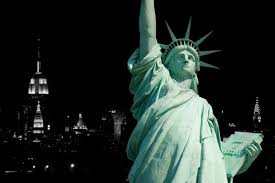Across Europe, football (soccer) fans are known for their club loyalty and fierce spirit. No less so in Ukraine, where each urban center has a popular professional or amateur football league team. Recently, however, Ukrainian football fans have also contributed to their country’s political life. During the last few months of crisis, they have been a formidable source of social mobilization in Kyiv and beyond, even if it is unlikely they will play a lasting role in domestic politics.
Background
Ukrainian football culture began to develop rapidly in the early 2000s. The fans— mostly men under 30 known as “ultras”—frequently came together in opposition to kuzmichi, a derogatory term referring to any other team’s fans. Fights broke out between fan groups and with the police, including with the Berkut special forces. Indeed, one of the most universal football chants (zaryady) for years has been “A.C.A.B.” (“All Cops Are Bastards”).
By the mid-2000s, football fans had formed stable coalitions, with the fans of Dynamo Kyiv, Karpaty Lviv, and Dnipro Dnipropetrovsk coalescing into the most powerful one. It was under their influence that that almost all fan clubs declared their commitment to the so-called “right cause” of Ukrainian nationalism. At times, the largest teams and their fan bases were part of international tournaments where national slogans were used. Playful propaganda and ideology erupted during games. The stadiums reverberated with popular zaryady, as fans of one team shouted things like “Slava Ukrainu (Glory to Ukraine)!” and the other team’s fans responded, ”Heroyam Slava (Glory to Heroes)!”
Over time, many club leaders and members became affiliated with nationalist political movements, such as the “Patriot of Ukraine” paramilitary organization. In 2010, the nationalist party Svoboda began working more closely with football fan organizations, holding regular joint activities such as torchlight processions or street protests for various causes.
A Growing Political Awareness
While emphasizing the relationship between football fans and nationalist political forces, it is important to avoid any oversimplifications. Ties are often fragile and flexible. Some fan clubs openly associate with political organizations while remaining staunchly autonomous. Relations among fan clubs can range from friendly to openly hostile depending on the context. Some fan clubs have varying states of internal conflict. Some entirely oppose the espousal of nationalist views, such as Arsenal Kyiv. Finally, some have their own specific regional and/or ethnic character: Chornomorets Odessa, Sevastopol, and Tavriya Simferopol, for instance, are openly pro-Russian (“imperial”), with fans regularly flying Russian flags at matches since at least 2008.
The fans of Dynamo Kyiv were the first to really articulate a significant civil and political stance. This occurred in the context of the “Pavlychenko case,” in which Dmytro Pavlychenko and his son Serhiy (both Dynamo Kyiv fans) were convicted of killing a judge, Serhiy Zubkov. They pleaded not guilty, and a number of subsequent investigations by journalists suggested that case materials had been fabricated. In late 2012, soon after the pair were sentenced to 13 years in prison, Dynamo Kyiv fans, other Ukrainian football club fans, and Svoboda members staged a large demonstration in Kyiv in support of the Pavlychenkos and demanded their release. At football games throughout Ukraine, “Free Pavlychenko” banners waved sporadically. The whole affair finally came to an end days after the Euromaidan revolution, when the Ukrainian parliament recognized the Pavlychenkos as political prisoners and released them.
Extremism and FIFA Sanctions
Over 2009-13, there were some dark moments. In the leadup to the 2012 European Football Championship, the FARE network (Football Against Racism in Europe) recorded 62 racist incidents in Ukrainian stadiums. There were further racist incidents in the fall of 2013 during the World Cup qualifying campaign. Following an incident during the September 2013 Ukraine-San Marino match at the Lviv Arena, the FIFA Disciplinary Committee imposed sanctions on the Ukrainian national football team. FIFA fined the team 45,000 Swiss francs, banned Ukrainian spectators from a future match against Poland, and disqualified the Lviv Arena as a match location until 2018. FIFA imposed the sanctions following reports from the head referee, the match inspector, and FARE of fireworks in the stadium and the shouting of Nazi and racist slogans.
Football Fans Impact the Euromaidan Movement
By the time the Euromaidan movement began in November 2013, solid links had been established between various nationalist groups and football fans, who began to participate in the movement within days. Dynamo Kyiv fans were the backbone of this involvement, and they played key roles in the December 1 attempt to occupy the presidential administration building on Bankova Street. Around the time of these events, many Karpaty Lviv fans began to arrive in Kyiv along with fans of smaller western Ukrainian football clubs. Following the lead of fans from Dynamo Kyiv and Karpaty Lviv, other Ukrainian fan groups actively volunteered to join the emerging self-defense and combat units within the Kyiv protest movement and, later, form their own.
In truth, many fans were supporters of the Right Sector, an umbrella group of several far-right organizations, including UNA-UNSO, Patriot of Ukraine, Volya, Social-National Assembly, Tryzub, and Bely Molot. The name Right Sector itself alludes to football fan jargon—it is a typical area of seating in a stadium—underlining the role of fans in the functioning and support of this political organization.
Further strengthening this overlap, according to some sources, one of the main organizers of cooperation between nationalist forces and fans in January and February was Yevhen “Vortex” Karas, who is well known among young football fans. He is a member of Svoboda and the leader of the racist organization C14. People say it was Karas who conducted negotiations with the leadership of the Dynamo and Karpaty fan groups during the protests.
Certain government laws also helped spark the even wider participation of fans in the protest movement. In mid-January, the Ukrainian parliament adopted a package of anti-protest laws that included a clampdown on delinquent behavior during football matches. For example, the laws specified that tickets were non-transferable and called for tougher sanctions on fan violations during games including outright bans. Football team owners like Rinat Akhmetov of Shakhtar, Serhiy Kurchenko of Metalist, and Nestor Shufrich of Goverla, being predominately members of the then-ruling Party of Regions, condemned the actions of the fans. They threatened to sanction their own fans by banning them from attending matches.
As the protests wore on, practically all regions declared their support for the Maidan and offered their protection to demonstrators. By February 13, fans of practically every Premier League club, including Chornomorets Odessa and Tavriya Simferopol, but not Sevastopol, announced a temporary truce and banded together for what they considered to be a higher cause.
Fanatics versus Titushki
Beginning in mid-January 2014, the activity of the titushki increased. These muscular working-class “sportsmen,” usually affiliated with various gyms and sports clubs, appeared to be hired by the government to attack peaceful protesters and passersby in Kyiv and at the “regional Maidans,” mostly in the southern and eastern regions of Ukraine. Armed clashes took place between the increasingly quasi-militant football fans and the titushki, and a number of gunfights occurred in Kharkiv and Dnipropetrovsk. Fans responded by forming better organized “people’s self-defense units” to prevent provocations and attacks by titushki. Fans in Kharkiv, Dnipropetrovsk, Zaporizhzia, Odessa and, to a lesser extent, Donetsk, were among the most active. The Kharkiv Metalist fans, for example, protected the Kharkiv “Maidan” the day Yanukovych was overthrown during a “Rally of Deputies” from Ukraine’s eastern regions. They also picketed the Kharkiv police academy, participated in the demolition of a monument to Lenin, and were involved in the seizure of the Kharkiv Regional State Administration building in February-March. The fans of other clubs in eastern cities such as Donetsk, Dnipropetrovsk, Zaporizhzia, and Lugansk provided similar support to “local Euromaidan” movements.
Core Motivators
What are the main reasons for this unprecedented participation of Ukrainian football fans in political events? The first is ideology—most fans consider themselves to be nationalists, and many club leaders tend to belong to the “right cause.” Second is the inveterate feud between fans and the Berkut. One of the key integrating aspects of the rather diverse fan environment is a hatred of law enforcement. It is quite possible that the excessive use of force by the Berkut at the end of November 2013 prompted the involvement of fans in the movement. The third factor is psychological: quite simply, many of these football fans are non-conformist young men with anti-authority views who are looking for an adrenaline rush. Hardened football fans had already been holding regular pre-arranged fights (mahachi) with fans of other clubs. Many likely welcomed the prospect of armed confrontation with the police.
We can distinguish two models of fan involvement during the Euromaidan events: the proactive model in Kyiv, by which football fans became the militant vanguard of clashes against government troops and buildings, and the reactive model, which was adopted in eastern Ukraine, whereby fans defended their local Maidans. In the case of the proactive model, nationalist ideology and communication with other nationalist organizations played a significant role in the ability to rapidly mobilize fan groups, primarily from western Ukraine, to join the cause. The reactive model represents a particular form of nationalism, with most of these fans committed to the “right cause” but as Russian speakers frequently opposed to the idea of European integration.
Political Prospects
Despite the popularity of right-wing ideology and nationalism, one cannot make any definitive conclusions about the organized transformation of football fans into ultra-right political forces grouping around the Right Sector and/or Svoboda. However, the coincidence of interests between fans and some political actors may play an important role in early parliamentary elections tentatively to be held this autumn. Some leaders of the fan movement are trying to capitalize on their familiarity among the public by openly declaring their transition to political activity; this includes figures like Taras “Gladiator” Pavliv, who heads one of Lviv Karpaty’s largest fan clubs (and who was accused of organizing the racist provocations during the previously mentioned Ukraine-San Marino match). Pavliv already has a potential political vehicle, having registered the NGO Zavzhdy Vіrnі! (“Always Faithful!”) in 2010. Another example was the presidential campaign of Right Sector leader Dmytro Yarosh, who secured the votes of many fan group members in eastern and southern Ukraine. However, the general failure of Yarosh’s campaign (he came in eleventh place with 0.7 percent) shows that it may be a mistake to overestimate the political prospects and impact of the fan movement as an influential political force and organizational support base. Football fans are rather indifferent to politics at “times of peace,” viewing it to be a normally unworthy business.
Furthermore, any cross-regional cohesion is not guaranteed as the fan clubs have never had a single control center, nor will they. There is a long history of confrontation between fans of different clubs—especially those of Dynamo and Shakhtar, Metalist and Dnipro, and Chornomorets and Karpaty. For now, the truce holds: in March, Dmitry Bulatov, the new Minister of Youth and Sports and one of the leaders of the “AutoMaidan” movement, met with fan club leaders who promised to continue maintaining peace and order during football matches until the situation in the country stabilizes. But it is doubtful that the truce will last until the end of 2014.
Conclusion
Consortia of Ukrainian football fans, much like their counterparts in Arab Spring states, are playing a transformative role in politics. Their participation in political life will probably wane with the return of stability, as Ukrainian fan clubs are a rather fragile foundation for building any long-term political project. For now, though, as conflict with Russia and pro-Russian separatists continues, fans will remain active and involved in aggressive struggles with titushki and other activists. They are maintaining self-defense units (today mainly in southern and eastern regions) and are joining established organizations like the National Guard. It is doubtful they will have a sustained function in future political projects, but their involvement in political processes has not yet come to an end.










